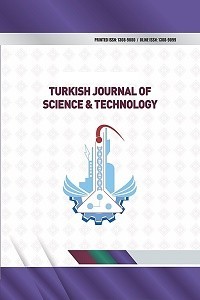Calculation of Optimum Insulation Thickness and Energy Savings for Different Climatic Regions of Turkey
Calculation of Optimum Insulation Thickness and Energy Savings for Different Climatic Regions of Turkey
In this study, the optimum insulation thickness, energy savings and payback periods were calculated based on life-cycle cost analysis for the cities of Balıkesir, Kayseri, Malatya, Mersin, Muğla, Şanlıurfa and Trabzon. These cities were selected from Turkey’s four climate zones. The calculations were carried out for coal as energy source, expanded polystyrene (EPS) and extruded polystyrene (XPS) as insulation materials on two types of walls: (1) sandwich and (2) externally insulated. Results indicated that insulation thicknesses varied between 0.002–0.049 m, with the amount of life-cycle energy saving as 0.629–21.047 $/m2 and a payback period of 0.3–6.5 years depending on the type of fuel, insulation material and wall-type. In this study, the optimum insulation thickness,
energy savings and payback periods were calculated based on life-cycle cost
analysis for the cities of Balıkesir, Kayseri, Malatya, Mersin, Muğla,
Şanlıurfa and Trabzon. These cities were selected from Turkey’s four climate
zones. The calculations were carried out for coal as energy source, expanded
polystyrene (EPS) and extruded polystyrene (XPS) as insulation materials on two
types of walls: (1) sandwich and (2) externally insulated. Results indicated
that insulation thicknesses varied between 0.002–0.049 m, with the amount
of life-cycle energy saving as
0.629–21.047 $/m2 and a payback period of 0.3–6.5 years depending on
the type of fuel, insulation material and wall-type.
Keywords:
Degree-Day Method, Energy saving, Optimum insulation thickness, XPS, EPS Coal, Turkey,
___
- 1. Kurt, H. (2011). The Usage of Air Gap in the Composite Wall For Energy Saving and Air Pollution. Environmental Progress and Sustainable Energy, 30, 450–458. 2. Bolatturk, A. (2006). Determination of Optimum Insulation Thickness For Building Walls With Respect to Various Fuels And Climate Zones in Turkey. Applied Thermal Energy, 26, 1301–1309. 3. Çay, Y, Gürel, A.T. (2013). Determination of Optimum Insulation Thickness, Energy Savings, And Environmental Impact For Different Climatic Regions Of Turkey. Environmental Progress & Sustainable Energy, 32 (2), 365-372. 4. Kaynaklı, O. (2012). A review of the Economical And Optimum Thermal Insulation Thickness for Building Applications. Renewable and Sustainable Energy Reviews, 16, 415– 425. 5. Ekici, B.B., Gulten, A.A., and Aksoy, U.T. (2012). A study on the Optimum Insulation Thicknesses of Various Types of External Walls with Respect To Different Materials, Fuels and Climate Zones in Turkey. Applied Energy, 92, 211–217. 6. Comakli, K., Yuksel, B. (2003). Optimum Insulation Thickness of External Walls for Energy Saving. Applied Thermal Engineering, 23(4), 473–479. 7. Comakli, K, Yuksel, B. (2004). Environmental impact of Thermal Insulation Thickness in Buildings. Applied Thermal Engineering, 24 (2), 933–940. 8. Dombayci, O.A. (2007). The environmental impact of Optimum Insulation Thickness for External Walls of Buildings. Building and Environment, 42 (11), 3855–3859. 9. Durmayaz, A., Kadioglu, M., and Sen, Z. (2000). An Application of the Degree-Hours Method to Estimate the Residential Heating Energy Requirement and Fuel Consumption in Istanbul. Energy, 25 (12): 1245–1256. 10. Hasan, A. (1999). Optimizing Insulation Thickness for Buildings Using Life Cycle Cost. Applied Energy, 63, 115–124. 11. Ozkan, D.B., Onan, C. (2011). Optimization of Insulation Thickness for Different Glazing Areas in Buildings for Various Climatic Regions in Turkey. Applied Energy, 88 (4), 1331–1342. 12. Sundarama, S., Bhaskaranb, A. (2014). Optimum Insulation Thickness of Walls for Energy-Saving in Hot Regions of India. International Journal of Sustainable Energy, 33 (1), 213–226. 13. Büyükalaca, O., Bulut, H., Yılmaz, T. (2001). Analysis of Variable-Base Heating And Cooling Degree-Days for Turkey. Applied Energy, 69, 269–283. 14. Fertelli, A. (2013). Determination of Optimum Insulation Thickness for Different Building Walls in Turkey. Transactions of Famena, XXXVII-2, ISSN 1333-1124, 103-113. 15. Ucar A., Balo F. (2010). Determination of the Energy Savings and the Optimum Insulation Thickness in the Four Different Insulated Exterior Walls. Renewable Energy, 35, 88-94. 16. TSE (Turkish Standards Institution). (1998). TS 825: Thermal Insulation in Buildings. 17. Dagsoz, A.K. (1995). Degree Day Values in Turkey, National Energy Saving Policy. Heat Insulation in Buildings. Izocam, Istanbul (in Turkish). 18. Sisman, N., Kahyab, E., Aras, N., Aras, H. (2007). Determination of Optimum Insulation Thicknesses of The External Walls And Roof (Ceiling) for Turkey’s Different Degree-Day Regions. Energy Policy, 35, 5151–5155. 19. Baskerville, G.L., Emin, P. (1969). Rapid Estimation of Heat Accumulation from Maximum and Minimum Temperatures. Ecology; 50, 514–517. 20. Floyd, R.B., Braddock, R.D. (1984). A Simple Method for Fitting Averaging Diurnal Temperature Curves. Agricultural and Forest Meteorology, 32, 107–119. 21. Yang, S., Logan, J., Coffey D.L. (1995). Mathematical Formulae for Calculating the Based Temperature for Growing Degree Days. Agricultural and Forest Meteorology, 74, 61–74. 22. Matzarakis, A., Balafoutis, C. (2004). Heating Degree-Days Over Greece As an Index of Energy Consumption. Int. J. Climatol., 24, 1817–1828. 23. Demir, I.H. (2014). Determination of Optimum Insulation Thickness for Building Exterior Walls and Cost Analysis (Bina dış duvarları için optimum yalıtım kalınlığının belirlenmesi ve maliyet analizi). MSc Thesis, Firat University, (in Turkish).
- ISSN: 1308-9080
- Başlangıç: 2009
- Yayıncı: Fırat Üniversitesi
Sayıdaki Diğer Makaleler
Data Mining Techniques Based Students Achievements Analysis
Dönüş ŞENGÜR, Songül KARABATAK
Investigation of Diffusion and Adsorption of Acetone in Building Materials by Dynamic Method
Occupational Health Risk Analysis and Assessment in Cement Production Processes
Ebru Kavak AKPINAR, İbrahim Halil DEMİR
Rzgar Farooq RASHID, Metin ÇALTA, Asiye BAŞUSTA
Keban Baraj Gölünde Yaşayan Aynalı Sazan (Cyprinus carpio L., 1758)’de Bazı Büyüme Parametreleri
Metin ÇALTA, Mustafa DÜŞÜKCAN, Burcu SAYIN
Perforeli Kanatlarda Şekil, Boyut Ve Eğim Açısının Isıl Performansa Etkisi
